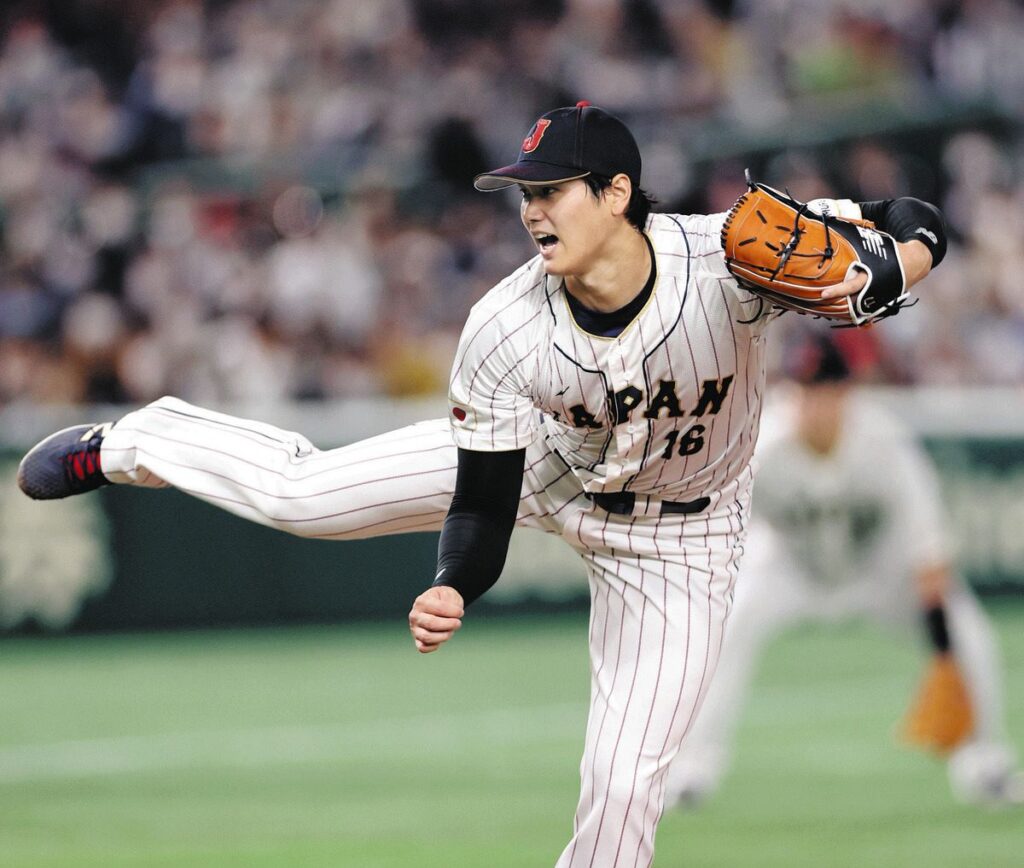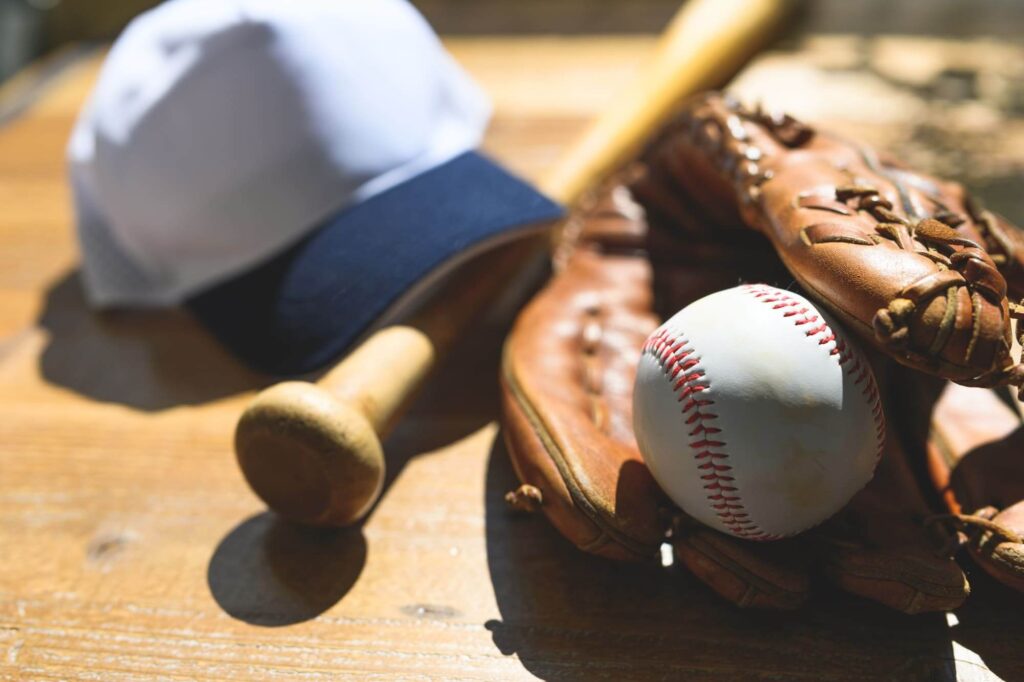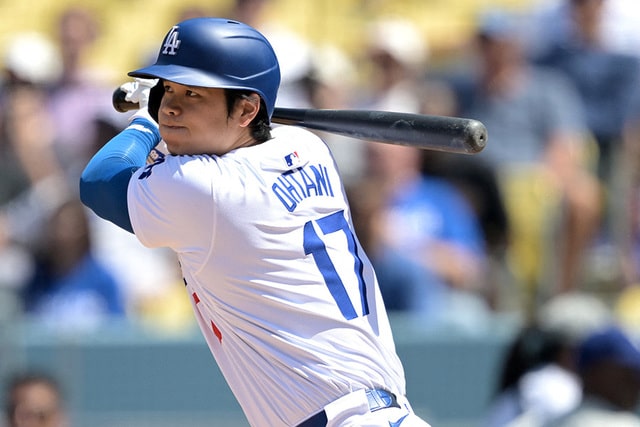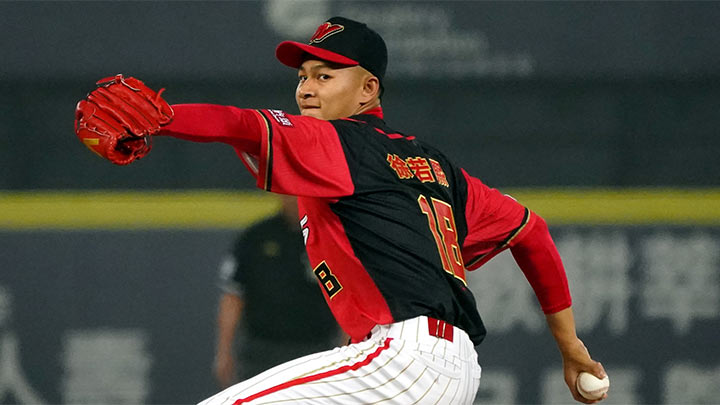
In baseball, a pitcher’s ball speed is one of the important factors that control the game.
Especially on the professional stage, the fastball can have a major impact on the outcome of a game.
In this article, we will introduce a ranking of the pitching speeds of the top pitchers in Japan and around the world, and provide detailed explanations of each pitcher’s characteristics and performance.
In recent years, pitch speed records have been updated year after year, and competition in professional baseball and major league baseball has intensified.
Attention has also been focused on the strategies and training methods of pitchers who use not only fastballs but also a variety of curveballs.
First, let’s take a look at the top pitchers in Japanese professional baseball and Major League Baseball.
We will also look at how his incredible pitching speed impacts the game and the future emergence of young pitchers.
目次
- 1 The fastest pitchers in professional baseball history
- 2 Fastest pitcher in major league baseball in 2023
- 3 Detailed analysis of the top 10 pitching speed rankings
- 4 The impact of pitch speed and changes in pitching style
- 5 Ranking of pitching speeds of promising young players
- 6 Training methods to improve pitching speed
- 7 Historical pitching speed records and their evolution
The fastest pitchers in professional baseball history
In professional baseball, the fastball is a pitcher’s most powerful weapon.
Fastballs are difficult for batters to react to and can greatly influence the flow of the game.
Here we’ll introduce the fastest pitchers in the history of professional baseball, taking a closer look at two particularly noteworthy players: Giants pitcher Vieira and Shohei Ohtani.
The fastest pitchers in professional baseball history continue to dazzle fans with their incredible pitching speeds.
Their fastballs aren’t just about velocity, they reflect the training, skill and mental toughness behind them.
Giants’ Vieira’s 166 km/h: Fastest pitch in Japanese professional baseball history
Giants pitcher Vieira recorded an astonishing 166 km/h in a game against Chunichi on August 13, 2021.
This is the fastest time in the history of Japanese professional baseball. Vieira, a Brazilian, set the record by utilizing his physical strength and technical ability.
Not only is his pitching speed fast, but he also has excellent control within the strike zone, making him a formidable opponent.
Vieira’s fastball comes from his physical strength and flexibility, particularly in his lower body and shoulder flexibility, which allow him to transfer maximum power to the ball.
His training includes strength training with heavy weights and detailed throwing drills.
His fastball is also strongly influenced by psychological factors. His performance is supported by his mental strength that does not give in to the pressure of a match and his desire to always aim for the fastest pitch.
Vieira’s 166kg is the culmination of his hard work and talent.
Shohei Ohtani’s 165 km/h: The fastest Japanese pitcher
Shohei Ohtani is one of the most versatile players in the history of Japanese professional baseball. He is known as a two-way player, and his 165 km/h fastball is the fastest recorded by a Japanese player.
He amazed the crowd by achieving this record three times during his appearances in the 2016 Pacific League Climax Series.
Ohtani’s fastball is the result of his outstanding athletic ability and pitching form.
He makes the most of his height and reach, and uses his entire body with powerful lower body movement to throw his fastball, making it an extremely difficult pitch for hitters to hit.
In addition, Ohtani has a variety of breaking balls, which he uses in combination with his fastball to confuse batters.
His training is extremely rigorous and involves strength training in all areas, including weight training, stretching to improve flexibility and repeated practice on a pitching machine.
Another major factor is his mental strength. He has the mental strength and focus to overcome pressure and always perform at his best.
Shohei Ohtani’s 165 km/h fastball is a milestone in Japanese baseball, and we can look forward to seeing even greater success from him in the future.
His record will surely serve as a great inspiration to young players and contribute to the development of the next generation of fastball pitchers.
The fastest pitchers in professional baseball history are prized not just for the fastball they throw, but also for the effort, technique and mental strength behind it.
Giants’ Vieira and Shohei Ohtani are symbols of this movement, and their performances will no doubt continue to captivate many fans in the future.

Fastest pitcher in major league baseball in 2023
In the 2023 Major League Baseball, pitch speed has become one of the points of interest.
The pitchers’ overwhelming fastballs dramatically liven up the game and captivate the spectators.
Here, we will look at the major leaguers with the fastest pitching speeds in 2023, Shintaro Fujinami and Joan Duran, and provide a detailed explanation of their amazing records and the background behind them.
Shintaro Fujinami’s 165.1 km/h: A new record for the Orioles
After transferring to the Orioles in 2023, Shintaro Fujinami recorded his fastest fastball of 165.1 km/h.
He achieved this feat in a game against the Mets on August 6th, attracting a lot of attention from fans and the media.
Fujinami was a Japanese ace who once played for the Hanshin Tigers, and his powerful fastball made him a force to be reckoned with in the professional baseball world.
Fujinami’s fastball is the result of his excellent physical abilities and thorough training.
In particular, his pitching form makes good use of the power of his lower body and improves the coordination of his entire body, allowing him to transfer maximum speed to the ball.
Fujinami’s pitching reflects his strong physical and mental strength.
Fujinami also has a wide variety of breaking balls, and he confuses batters by combining them with his fastball.
His forkball and slider change drastically from the same trajectory as his fastball, making them very difficult for batters to hit.
Throughout the 2023 season, Fujinami used his fastball and a variety of curveballs to contribute to many victories.
Shintaro Fujinami’s 165.1 km/h pitch is the culmination of his hard work and talent, and expectations are high for his future success.
As a member of the Orioles, he will continue to have a brilliant career in the major leagues.
Joan Duran’s 168.6 km/h: Fastest pitch in the majors in 2023
Joan Duran recorded the fastest pitch in major league baseball in 2023 at 168.6 km/h.
Duran, a relief pitcher for the Minnesota Twins, has overwhelmed batters with his overwhelming pitching speed and has attracted attention throughout the 2023 season.
This record would see Duran establish himself as the fastest pitcher in major league baseball.
Duran’s fastball is backed by his excellent athleticism and technique.
In particular, the accuracy of his arm swing and release point allows him to combine fastball speed with control.
His pitching form is smooth and powerful, allowing him to transfer maximum power to the ball.
In addition to his fastball, Duran is also adept at using a variety of breaking balls, including a curveball and slider.
His curveball contrasts strongly with his fastball, making it very difficult for batters to hit.
Duran’s pitching style is centered around fastballs, but he also has the ability to use a variety of pitches, giving him the power to dominate a game.
Joan Duran’s 168.6 km/h is one of the best records in major league history and is a testament to his talent and hard work.
Throughout the 2023 season, he struck out numerous batters with his fastball and made a significant contribution to the Twins’ victories.
Duran’s pitching will surely continue to captivate many fans in the future.
The 2023 Major League season has become even more colorful and exciting thanks to two fastball pitchers, Shintaro Fujinami and Joan Duran.
Their incredible pitching speed has had a major impact on the future of professional baseball and serves as inspiration for the next generation of pitchers.
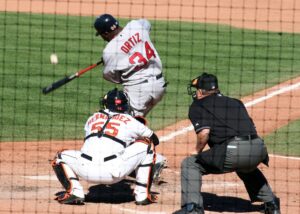
Detailed analysis of the top 10 pitching speed rankings
In professional baseball and major league baseball, pitchers who can throw fastballs at speeds of over 160 km/h are very rare.
Their fastballs have the potential to change the course of a game.
Here, we will take a closer look at what the pitchers ranked in the top 10 in terms of pitch speed have in common, and what breaking balls they use in addition to their fastballs.
What pitchers who throw over 160 km/h have in common
Pitchers who throw fastballs over 160 km/h have a few things in common.
First, there is their physical strength. Most fastball pitchers are tall and muscular, with particularly strong lower bodies.
This allows you to efficiently transfer the power of your entire body to the ball when throwing.
Next, the stability and efficiency of their pitching form is also an important factor.
A fastball pitcher has a smooth, powerful form and is able to deliver maximum power at the moment of release of the ball.
The stability of this form is developed through repeated practice, and technical training is also essential.
Another thing they have in common is their mental strength.
Pitchers who can throw fastballs exceeding 160 km/h have high levels of concentration and the mental strength to overcome pressure.
Mental toughness is required to throw your best pitches at crucial moments in the game.
Finally, their continued training and strong awareness of physical condition should not be overlooked.
To throw a fastball, it is important to always maintain top condition, and proper weight training, stretching, and nutritional management are essential.
In addition to the fastball, what type of curveball does he have?
Pitchers who throw fastballs over 160 km/h often have a variety of curveballs in addition to their fastball.
This allows him to confuse batters and strike them out with a combination of fastballs and curveballs.
Common breaking balls include the slider, curveball, forkball, and changeup.
For example, Major League Baseball pitcher Jacob deGrom has a fastball that exceeds 160 km/h, as well as a sharp slider and an effective changeup.
This allows him to take advantage of the speed difference of his fastballs and confuse the batter.
Also, Japanese professional baseball player Roki Sasaki is attracting attention for his combination of fastball and forkball.
His forkball drops sharply with the same arm swing as his fastball, making it very difficult for batters to hit.
Furthermore, pitchers who throw fastballs over 160 km/h also have high accuracy in their breaking balls.
Their ability to control not only their fastball but also their curveballs makes their pitching all the more effective.
For example, Aroldis Chapman of the New York Yankees has a highly accurate slider in addition to his fastball, allowing him to overwhelm batters.
These pitchers have the power to dominate games with their combination of fastballs and curveballs.
The power of their fastballs, plus the variety and accuracy of their breaking balls, are what set them apart as top-level pitchers.
Pitchers who throw fastballs over 160 km/h demonstrate overwhelming performance through a combination of physical strength, technical pitching form, mental toughness, and a variety of breaking balls.
Their success is the result of training and talent, and they will continue to attract many fans for years to come.
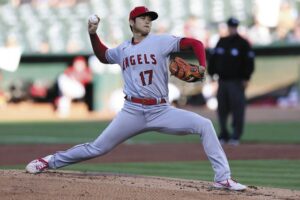
The impact of pitch speed and changes in pitching style
Pitch velocity is a very important factor in modern baseball and is often directly related to a pitcher’s success.
A fast ball speed not only increases the pressure on the batter and makes it harder to hit, but also has a major impact on the pitcher’s overall pitching style.
Here we will take a closer look at the impact of ball speed and changes in pitching style.
Correlation between pitch speed and winning percentage
Pitchers with faster pitch speeds generally tend to have higher winning percentages.
This is because a fastball is very difficult for a hitter to react to.
Batters have limited time to react to a fastball, which often induces missed shots or strikeouts.
For example, when comparing average pitch speed and pitcher winning percentage in Major League Baseball, fastball pitchers have a higher winning percentage overall.
Pitchers with fastballs over 100 mph have a significant advantage over hitters, which results in a higher chance of winning games.
In addition, the power of a fastball is greatly influenced not only by its speed, but also by the position of the release point, the number of spins, and the trajectory of the ball.
The combination of these factors makes the fastball even more impenetrable to hitters, ultimately helping the pitcher improve his winning percentage.
A strategy for fastball pitchers to dominate the game
There are a few key strategies a fast bowler can follow to dominate the game.
First, there is his aggressive pitching style that focuses on fastballs.
Pitchers who rely on fastballs can use their speed to put pressure on batters and get an advantage in the count early on.
For example, fastball pitchers often throw their fastball as the first pitch or when the count is 0-2, allowing them to force the batter into a corner.
In addition, by using a combination of fastballs and curveballs, he can throw off the batter’s timing and induce him to make a missed shot.
Furthermore, fast bowlers also have the advantage in the psychological battle.
The power of a fastball can instill fear in hitters, which makes them hyper-conscious about reacting to the fastball.
By taking advantage of this psychological pressure, he can effectively use his curveballs to confuse the batter.
For example, Aroldis Chapman of the New York Yankees strikes out many batters with a combination of a powerful fastball and a slider.
His fastball exceeds 100 miles per hour (about 161 kilometers per hour), overwhelms batters with its power, while throwing off their timing with his slider.
summary
Pitch velocity is a key factor in a pitcher’s success, and fastballers have a variety of strategies to dominate the game.
The power of a fastball puts a lot of pressure on the batter and increases the pitcher’s winning percentage.
In addition, by combining fastballs and curveballs and using psychological warfare, he has the ability to confuse batters and control the flow of the game.
Taking all these factors into consideration, the impact of pitch speed and changes in pitching style are extremely important themes in modern baseball and will continue to attract attention in the future.
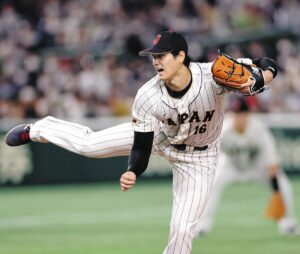
Ranking of pitching speeds of promising young players
A number of promising young pitchers are emerging in the world of professional baseball, and two in particular are attracting attention: Orix’s Soichiro Yamazaki and Lotte’s Roki Sasaki.
They have captivated fans with their overwhelming pitching speed and incredible talent, and we are looking forward to seeing them do great things in the future.
Here we will take a closer look at the characteristics and performance of Yamazaki Soichiro and Sasaki Roki.
Soichiro Yamazaki’s 160 km/h: Rising star of the Orix Buffaloes
Soichiro Yamazaki is a young pitcher who is attracting attention for the Orix Buffaloes.
In the fourth game of the 2022 Climax Series (CS) final stage, he recorded his fastest pitch of 160 km/h, attracting the attention of fans and media.
His fastball is characterized by a powerful straight pitch that comes from his tall frame.
Yamazaki’s growth is the result of his hard work and training.
He places particular emphasis on weight training and improving his pitching form, which has enabled him to maintain a consistently high pitch speed.
His pitches also include a variety of breaking balls, and he effectively uses a forkball and knuckle curve to confuse batters.
His forkball drops sharply with the same arm swing as his fastball, making it very difficult for batters to hit.
Additionally, the knuckle curve, which he learned from teammate Brandon Dixon, confuses hitters with its sharp change of pace.
Yamazaki’s combination of a 160 km/h fastball and a variety of breaking balls will make him a valuable asset to Orix’s roster.
He has a very bright future and we look forward to seeing him continue to grow and excel.
Roki Sasaki’s 165 km/h: Lotte’s next generation ace
Roki Sasaki is expected to be the next ace of the Lotte Marines.
At the send-off game for the Japanese national team for the 2023 World Baseball Classic (WBC), he recorded his fastest pitch of 165 km/h, surprising the crowd.
This record is one of the best fastballs ever recorded by a Japanese player.
Sasaki’s fastball is not only characterized by its overwhelming speed, but also by the accuracy of his release point and the high number of spins of the ball.
His pitching form is extremely efficient, allowing him to throw with full body force.
This allows you to transfer maximum power to the ball.
In addition to his fastball, Sasaki also has a variety of curveballs, including a forkball and a slider.
His forkball is a tricky pitch for hitters because it drops sharply from the same trajectory as his fastball.
The slider also has a sharp change of speed and is effective in throwing off the batter’s timing.
His training is extremely rigorous and involves strength training in all areas, including weight training, stretching to improve flexibility, and repetitive drills.
This allows the condition to be kept at its best at all times, resulting in stable performance.
Roki Sasaki’s 165 km/h fastball and variety of curveballs are powerful weapons for Lotte.
He is expected to continue to grow and achieve even greater success, and is seen as someone who will shape the future of Japanese baseball.
Among the young pitchers, Soichiro Yamazaki and Roki Sasaki are particularly garnering attention for their overwhelming pitching speed and excellent technique.
A closer look at their performance and characteristics reveals that their success is the result of daily hard work and training.
I’m really looking forward to seeing what they do in the future.

Training methods to improve pitching speed
In baseball, the fastball is one of the pitcher’s weapons. To improve the speed of the ball, proper training is necessary.
Here we’ll go into detail about effective weight training, technical approaches, and mental training.
Effective weight training
In order to improve your pitching speed, it is essential to build a strong body.
It is especially important to strengthen the lower body and core muscles.
Below are some examples of effective weight training exercises.
1. Squats: Squats are a fundamental exercise for the entire lower body. They strengthen the quads, hamstrings, and glutes, and allow you to generate the explosive power you need when pitching. Back squats with a heavy barbell or goblet squats with dumbbells are effective.
2. Deadlifts: Deadlifts are a great exercise for building total body strength, particularly in the hamstrings, glutes and back, and they also improve stability and power when throwing. Maintaining proper form is important.
3. Bench Press: The bench press is an exercise that strengthens the pectoral muscles, deltoids, and triceps. It is effective in improving the strength needed for arm swing and ball release when pitching.
4. Medicine Ball Throws: Medicine ball throwing exercises mimic the throwing motion and develop total body strength and power, especially core stability and rotation.
Technical approach and mental training
The technical aspects of throwing a fastball are also important.
Correct pitching form and mental strengthening are required.
1. Correct form: Having the correct pitching form directly leads to improved ball speed. Video analysis and feedback from coaches are effective in improving your form. In particular, stability of the release point and how you use your lower body are important.
2. Core Training: Core strength is essential for maintaining a stable form. Core training exercises such as planks and rotational exercises will improve balance and power transfer when throwing.
3. Improving flexibility and range of motion: Increasing flexibility and range of motion in your joints will make your pitching motion smoother. Stretching and yoga are effective ways to improve your pitching motion.
4. Mental training: To pitch a fastball, you also need a strong mentality. It is important to incorporate mental training and visualization techniques to overcome pressure. Visualizing a successful pitch before a game can boost your confidence.
5. Pitching practice: Actual pitching practice is also essential. By practicing a combination of fastballs and curveballs, and practicing in game situations, you can hone your practical skills.
In order to improve pitching speed, not only physical training is important, but also technical improvement and mental strengthening.
By incorporating these elements together, you can maximize your potential as a pitcher and increase the power of your fastball.

Historical pitching speed records and their evolution
Baseball speed records continue to evolve with the times.
Let’s look back at the pitching speed records of pitchers from the Showa era to the Reiwa era and follow the changes over time.
We will also take a closer look at the impact of evolving technology and changes in training.
From Showa to Reiwa: Changes in pitch speed records
In baseball during the Showa era, pitchers with a ball speed exceeding 140 km/h were rare.
However, in the 1980s, the number of pitchers throwing fastballs in the high 140s to 150s began to gradually increase.
Notable pitchers from this period include Toyo Enatsu of the Hanshin Tigers and Tsuneo Horiuchi of the Giants.
As the Heisei era began, the improvement in pitching speed became even more noticeable.
From the 1990s to the 2000s, pitchers capable of throwing fastballs exceeding 150 km/h appeared one after another.
In particular, pitchers such as Hideo Nomo and Hideaki Irabu thrived in the major leagues with their powerful fastballs, and significantly broke Japanese pitching speed records.
As we enter the Reiwa era, pitcher speeds have accelerated even further, and it is no longer uncommon to see pitchers throwing speeds exceeding 160 km/h.
Modern-day representative fastball pitchers include Shohei Ohtani and Roki Sasaki.
They overwhelm many batters with their fastballs not only in Japanese professional baseball but also in Major League Baseball.
The impact of evolving technology and changes in training
The improvement in pitching speed has been largely due to advances in technique and changes in training.
1. Improved pitching form: Modern pitchers are improving their pitching form based on scientific analysis. Using high-speed cameras and motion capture technology, they analyze their pitching form in detail and pursue efficient pitching movements. This allows them to transfer power to the ball without waste, leading to improved pitch speed.
2. Specialized training: Training methods have also evolved significantly. By combining a variety of training methods, such as weight training and core training, as well as stretching and yoga to increase flexibility, and even Pilates, players’ overall physical abilities are improved. In addition, training programs are created for each individual player, making it possible to train their bodies efficiently.
3. Mental training: In order to increase pitching speed, it is also important to strengthen the mentality. Mental training to develop the mental strength to withstand pressure and image training using visualization techniques are incorporated. This allows players to perform at their best even in important situations in the game.
4. Nutritional management: Nutritional management is also an important factor. Modern pitchers make an effort to effectively ingest the necessary nutrients through food and supplements and always keep their bodies in top condition. This maximizes the effect of training and leads to improved pitching speed.
summary
Looking at the changes in pitching speed records from the Showa era to the Reiwa era, we can see that technological advances and changes in training have had a major impact.
Pitchers have adopted a scientific approach and have improved their pitching velocity by pursuing more efficient form and training methods.
With further advances in technology and improvements in training methods, pitching speed records will likely continue to be broken in the future.
